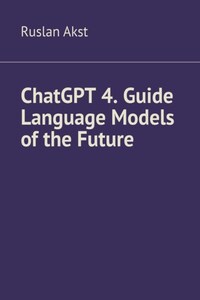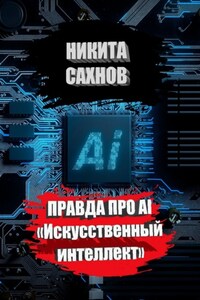Introduction: Why Are Language Models Changing the World?
When I first encountered language models, I was deeply struck. It was more than just a new technology; it was a true revolution in the world of communication and information processing.
But let’s set the awe aside for now and start from the very beginning. This book is your guide to the fascinating world of language models, where words and algorithms intertwine, creating something completely new and captivating.
Prepare yourself: an exciting journey into the heart of artificial intelligence awaits you. Have you ever wondered by what «miracle» we communicate with each other?
After all, our language is not just words. It is a bridge between our minds, a magical tool that allows us to convey ideas, feelings, and knowledge to each other.
Over the course of millennia, humanity has refined language, creating increasingly complex structures and rules for this amazing exchange of information.
Now imagine that machines are starting to understand this language. They don’t just recognize words, but also penetrate the deep meaning, context, and subtle nuances of our communication.
This is not just the next stage in the evolution of technology; it is a giant leap that promises to radically transform our world. Fascinating, isn’t it?
Dive into this book, and you will learn how this revolution in the field of artificial intelligence is beginning to change the rules of the game in various aspects of our lives.
Language models, like GPT, act as a key to a whole new world, where the boundaries between human and machine are blurred to near complete fusion.
In this world, opportunities for learning, working, and creating expand to such an extent that they seem almost limitless.
But before we dive into this astonishing new world, let’s take a step back and remember where it all began.
Allow me to guide you through the history of language technology development to understand how we arrived at creating such amazingly powerful tools like ChatGPT.
Humanity has always been obsessed with the desire to understand and create language. From the first primitive signs on cave walls to the most complex language systems, our journey has been long and full of remarkable discoveries.
Each stage of this path was motivated by the desire to understand each other and the world around us more deeply.
The primal task that our brain faced was the desire to describe the surrounding world – all the objects it sees – with words. And our brain handled this task surprisingly brilliantly.
This became the key to conveying information to other people using a completely new, powerful tool: speech.
This breakthrough allowed us not only to communicate but also to think collectively, laying the foundation for all human progress.
Primitive written symbols became a bridge to the future for us, providing a unique opportunity to preserve and pass knowledge to future generations.
This was the embryo of culture and civilization as we know them today. With expanding horizons, the development of trade, culture, and science, there arose a dire need to create more complex and flexible language systems.
Grammar, syntax, vocabulary – each of these language elements became the subject of constant development and refinement over the centuries.
This was not just a process of forming rules and structures; it was an art, the magic of words, which allowed people to express their thoughts and feelings with incredible accuracy and depth.
This path that humanity has taken opens up one of the most amazing and inspiring chapters in the chronicles of our species.
But the true breakthrough came with the dawn of the digital era. Computers, as powerful analysis tools, gave us the ability to process and interpret vast volumes of data like never before.
It was at this moment that the history of language technology development, in the form we know today, was born.
The first text processing programs were truly pioneers, but their capabilities were quite limited. They could recognize individual words or phrases, but understanding the deep meaning or context of these words was beyond their reach.
Let’s imagine one of the first such programs: it could determine that the word «apple» refers to a fruit, but it wouldn’t understand that in the phrase «apple of discord,» the discussion is not about a fruit, but about a cause of conflict.
Or, for example, early machine translators: they could literally translate words from one language to another, but the result was often far from ideal.
The phrase «It’s raining cats and dogs» was translated not as «It’s pouring heavily,» but in the literal sense, which, of course, sounded quite amusing and absurd to native speakers.
These first programs were like infants just beginning to learn language: they could recognize words, but they couldn’t yet understand complex phrases or ambiguities that are a natural part of communication for us humans.
However, with each passing year, they became smarter, learning from their mistakes and gradually approaching a human level of language understanding.








